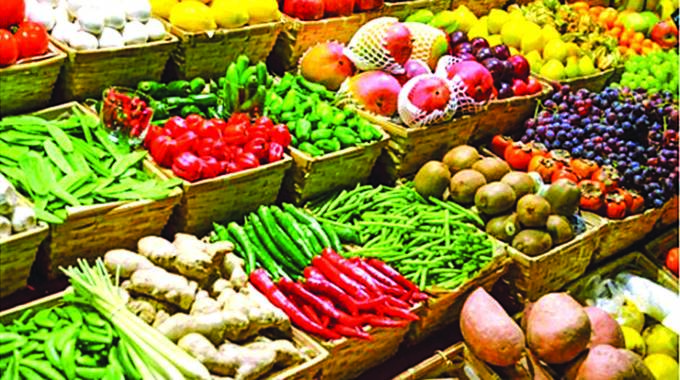
The Sunday Mail

Word From The Market with AMA
THE Horticulture Recovery and Growth Plan (HRGP 2020-2025) encompasses the conventional horticulture programme, which aims at restoring the export-led programme and the Presidential Rural Horticulture programme.
It is being championed by the Horticulture Development Council and co-ordinated through the National Horticulture Working Group, a multi-stakeholder committee chaired under the Office of the President and Cabinet while the Presidential Rural Horticulture programme is being co-ordinated by the Ministry of Lands, Agriculture, Water, Fisheries and Rural Development headed by Dr Anxious Masuka..
It has the following components; ward-based youth nutrition gardens, village nutrition gardens and orchards, school nutrition gardens, household tree planting, establishment of aggregation centres, domestic and export market development for indigenous veggies and fruits, research, development, innovation on indigenous vegetables, sweet potato planting material.
Essentially, the need to improve the food and nutrition security of the communities has given birth to the introduction of the above mentioned components.
Previously, horticulture was not done in an informed way of using improved varieties and clean planting material. Nutritious indigenous vegetables and fruits had been completely forgotten leading to loss of lives and livelihoods. Both domestic and export market of indigenous fruits and vegetables had dwindled.
Sweet potatoes have been grown from vines, which are not virus free hence the low harvests and poor-quality produce, which is not suitable for both domestic consumption and export.
And to give more traction to the Horticulture Recovery and Growth Plan, the Ministry of Lands, Agriculture, Fisheries, Water and Rural resettlement through the Agriculture Research and Innovation Development, is facilitating the implementation of the Horticulture Recovery and Growth Plan to ensure food and nutrition security.
The programme is focusing on village nutrition gardens for which an inventory of those currently operational has since been done as a baseline to inform new interventions.
It has been established that there are more than 8 000 gardens where interventions such as borehole repairing and crop diversification (to include ginger, turmeric and chillies) will be done.
Work has also been initiated on ward-based nutrition gardens and orchards while designs for nutrition gardens with solar borehole pumping have been done too including the suggested cropping programme.
There is the household tree planting programme that has seen fruit tree suitability maps being prepared as a tool to guide the selection of value chains in terms of market potential and agro-ecological suitability with special priority being given to value chains with a potential income of at least US$700 per household per annum. Fruits such as litchi, passion fruit, pecan nuts, kiwi, apple, guava, mango, macadamia nuts and grapes will be produced under the project.
These were, however, further reduced to pecan nuts, apple, guava, macadamia nuts and mango based on the requirement of a cold chain with efforts to intensify the procurement process already underway. There will also be school nutrition gardens and orchards whose designs have been done.
While all this is happening, there is research, development and innovation programmes on indigenous vegetables also taking place.
This will target 100 schools and the indigenous fruit trees identified to be involved have since been identified.
Trees such as Uapaca kirkiana and Strychnos will feature in the list and their propagation will be initiated in nurseries while the prioritised indigenous veggies Cleome gynandra, Brassica carinata, and Amaranthus hybridus. Seed packs of 50g each of C. gynandra and B. carinata are being prepared for distribution to schools.
Sweet potato planting material from clean plants (virus eliminated) will be distributed to 96 centres that are not prone to frost as multiplication sites for the roll-out of the programme in summer.
Already 15 varieties including orange fleshed sweet potatoes have been distributed as part of the 100-day programme that will be rolled over to the next 100-day programme.
Projections are that once the above components are implemented, there will be an increase in food and nutrition security through provision of indigenous fruits and vegetables as well as improved income from both domestic and export markets of
the said indigenous fruits and vegetables.
The Agricultural Research and Innovation Development department through its institutes and other partners will provide agricultural technologies on school nutritional gardens, research and development of indigenous vegetables and fruits as well as provision of exotic fruit trees, clean planting material (virus free), and orange fleshed sweet potato.
◆ Word from the market is a column produced by the Agricultural Marketing Authority (AMA) to promote market driven production of agricultural crops. Department of Research and Specialist Services (DRSS) contributed to this article. Feedback [email protected] or [email protected]



